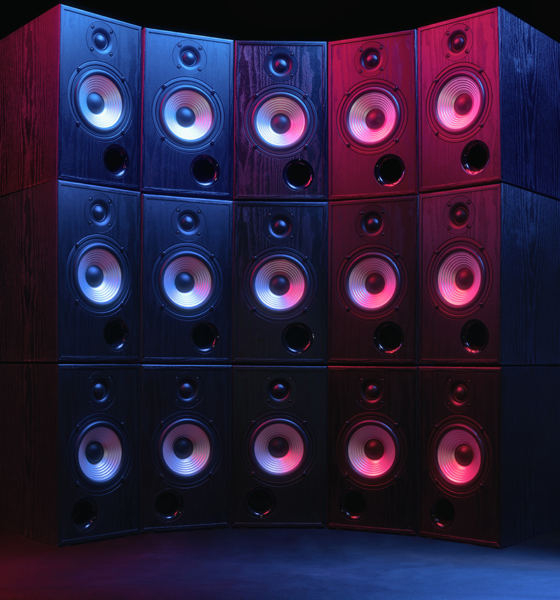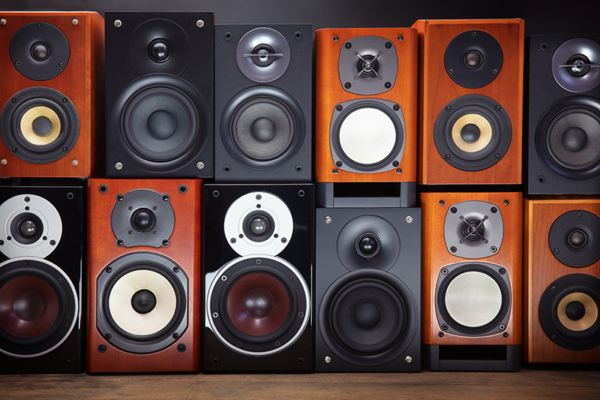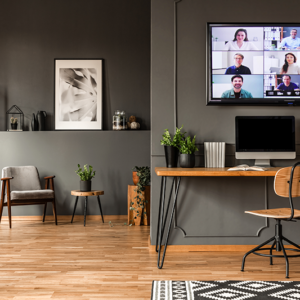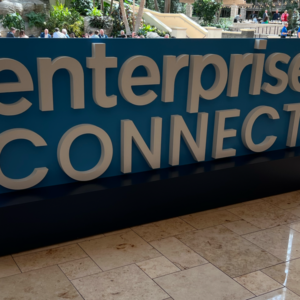Speaker Companies Playing a Reckless Game Speaker SPL
Loudspeaker companies today find themselves trapped in a dangerous arms race, desperately trying to one-up each other by publishing ever more outrageous audio specifications. In a crowded market, they hope to grab attention with sky-high sound pressure level (SPL) ratings and other impressive metrics—even if their products can’t actually achieve those levels without significant distortion or damage.

Speaker Wars
This specification war may help sell speakers in the short term, but ultimately puts consumers in a difficult position. On paper, Brand A’s flagship model boasts 136dB max SPL, while Brand B can only muster a pathetic 129dB. However, cranking either system to those extremes in the real world would likely result in horrible sound quality, blown drivers, fried amps, or all of the above.
AVNation took a hard look at these questionable claims, consulting with engineers and designers across the audio industry. Most asked to remain anonymous to avoid rocking the boat, but all corroborated that exaggerated specs run rampant among major players and minor ones alike.
“It’s an arms race that’s spinning out of control,” confessed one veteran engineer at a leading brand. “We’re terrified to be the first to blink, even when we know the claims are ridiculous.”
To illustrate the extent of the hyperbole, we simulated the max SPL of a typical bi-amped active speaker with quality off-the-shelf components. With a 12-inch woofer and 1.4-inch compression driver powered by a 2,000W bass amp and 220W tweeter amp, simulations showed it topping out around 132dB in the midrange and a mere 120dB in the low bass.
Speaker SPL Reality
Nowhere near the 136dB or more boasted by many competitor models using similar driver sizes. So how do they arrive at those impressive numbers?
Based on background interviews, many exploit loopholes in testing methodology, cherry-pick misleading program material, and simply ignore the awful distortion effects at those extremes. One candid R&D engineer at a major brand admitted their flagship 141dB system only reaches that level with short bursts of test tones. Actual music would sound horrendous and be virtually unlistenable at those SPLs as limiting compressors frantically chop peaks.
While smaller boutique companies tend to keep their specs reasonably honest, giant speaker brands feel pressure to play the game in hopes of winning market share and mindshare. Their marketing teams often dictate the published specs to engineering. And sales teams just want the biggest numbers possible to tout against competitors.
Clearing up Confusion
This leaves end users confused, misled, and unable to trust manufacturer claims at face value. Our dream scenario? A revised specification standard that highlights:
– Maximum SPL under strict lab test conditions (almost meaningless for real-world use)
– SPL threshold for typical program material within operating range
– SPL handling robust low end without excessive port compression
Such a system would go a long way towards clearing up the intentional fog of marketing hype. It would empower buyers to make informed decisions based on real-world criteria that matter to them.
But until such a reckoning happens, consumers should take those astronomical SPL claims with a sizable grain of salt. The unvarnished truth may hurt—but your precious ears will thank you.

Behind the Speaker SPL Numbers Game
To better understand precisely how loudspeaker companies manipulate their specs, we dug into the techniques they use to inflate that all-important number: maximum SPL.
Every loudspeaker exhibits peaks and dips in sensitivity across its operating bandwidth. By testing SPL at the
very highest peak, manufacturers can effectively “tune” the box to perform for bragging rights on paper. Our simulated speakers hit 142dB sensitivity at one carefully chosen frequency, despite 132dB being more typical.
When pushed to their limits, woofers exhibit clipping and compression, while tweeters become shrill. By disregarding horrendous distortion, brands can crank up the volume until drivers physically stop moving more. Even if it sounds atrocious, their meters tick higher.
Using short bursts of optimized pink noise or test tones sidesteps limits that would arise with real music content. Our simulations reveal a 3-way speaker hitting its advertised 141dB mark this way. Yet real instruments would be a compressed mess at that level.
Defining Definitions
Ports help woofers achieve higher SPLs over a narrow bandwidth. But exceed their limits and turbulence occurs, choking output. Some specs conveniently omit this bass reduction while highlighting inflated midrange peaks.
The thermal power handling of a woofer limits achievable volume over time. Voice coils overheat, resistance rises, and SPL drops. Some brands ignore this, perhaps measuring SPL for milliseconds before compression occurs.
The core problem is that no universally accepted standard defines methodologies and limits for loudspeaker SPL testing. Major organizations offer guidelines, but brands ultimately choose how to measure and report.
The Audio Engineering Society (AES) and European EIA set standards for anechoic chamber testing and power handling. While not binding, they provide a solid framework that many brands adopt.
Others run free with in-house methods that allow “creativity.” To end the arms race, governing bodies may need to define strict procedures and require independent verification to earn a “True SPL” certification badge.
Until then, the onus falls on buyers to parse manufacturer claims very carefully and take demo listening time in proper environments. While eye-popping specs sell, ears don’t lie. Let them be the judge.









